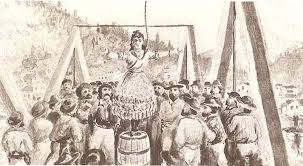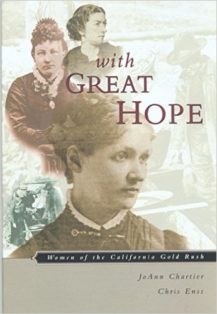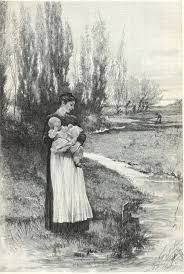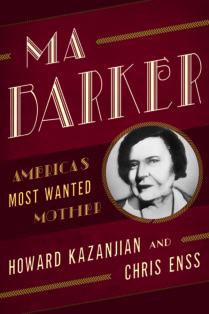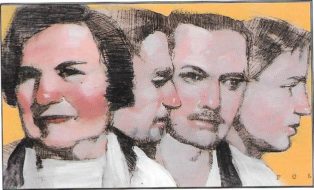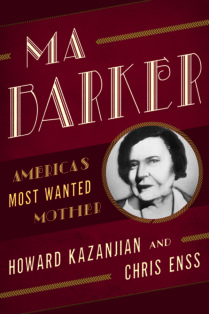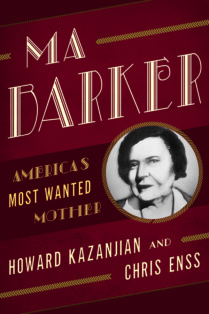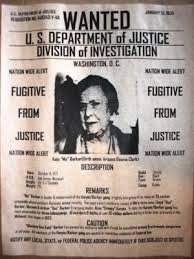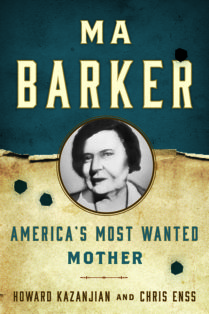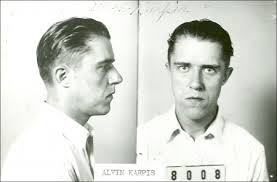Enter now to win a copy of
Ma Barker: America’s Most Wanted Mother.
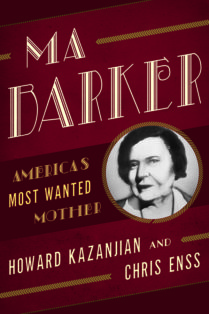
In a time when notorious Depression-era criminals were terrorizing the country, the Barker-Karpis Gang stole more money than mobsters John Dillinger, Vern Miller, and Bonnie and Clyde combined. Five of the most wanted thieves, murderers, and kidnappers by the Federal Bureau of Investigation (FBI) in the 1930s were from the same family. Authorities believed the woman behind the band of violent hoodlums that ravaged the Midwest was their mother, Kate “Ma” Barker.
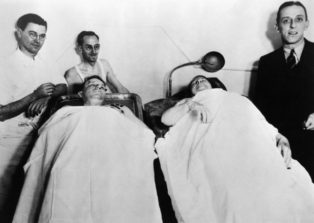
16 Jan 1935, Florida, USA — Original caption: 1/16/35-Oklawaha, Florida: Ma Barker and her son, gangster Fred Barker, in morgue of Iklawaha, Florida, after they were shot. Photograph. — Image by © Corbis
The bodies of Ma Barker and her son Fred were taken to the Pyle Mortuary in Ocala, Florida, after they were killed in the shoot–out with federal agents. On January 16, 1935, mother and son were laid on stainless steel slabs, their frames covered with sheets from their necks down. Marion County officials and federal agents posed for photographs with the dead gangsters, and reporters negotiated with morgue employees for a chance to see the well-known criminals lying in state.
The deceased outlaws were the town’s top attraction for eight months. Their iced-down bodies, riddled with bullet holes, were still and bloated, waiting for somebody to come bury them. The FBI encouraged the Barkers’ extended stay in Florida, hoping that gang members still at large might drop by to make sure the two gangsters were indeed Ma and Fred Barker. No gang members showed, but tourists came from all over the country to view the bodies.
George Barker, Ma’s estranged husband, was notified of the death of his wife and son on January 17, 1935. The January 18, 1935, edition of the Springfield Daily News noted that George, now sixty-seven, wasn’t interested in hearing about the pair. “I don’t care when and how Fred and Kate are buried,” he told reporters. “I don’t care to have them brought back here. I wouldn’t care to attend the funeral. I’d like to be left out of all this. They chose their path some years ago and I followed mine. I haven’t seen any of them in years.”
George was a solitary man who had worked at a gas station and as a caretaker of a campground in Joplin, Missouri, since he and Ma had gone their separate ways in 1928. An article in the October 14, 1935, edition of the Pulaski Southwest Times reported that George rarely, if ever, spoke to his estranged wife and children. He was visited often by law enforcement agents who speculated that members of the Barker-Karpis Gang might use his home and business as a place to hide from the law. George’s friends and neighbors said he was honest and upright and that his only solace came in knowing that at least one member of the family remained respectable.
“After the Barker boys began to get in ‘big time’ crime they tried to lure their father away from Joplin,” the Pulaski Southwest Times article read. “They told him he would not have to worry anymore about money the rest of his life. George, however, chose to remain in Joplin barely earning enough to live on.”
The government strongly encouraged George to assume the legal responsibility for taking care of burying his family. It wasn’t until George learned that Ma and Fred would be given a pauper’s funeral and laid to rest in Florida that he decided he wanted to bring them home. The problem was he didn’t have money for his estranged wife and son to be transported to Oklahoma to be buried next to Herman. It would take George several months to gather enough funds to get the job done.
In the meantime, George learned that he and another gentleman named Frank Dixon were named co–administrators of Fred’s estate. The money discovered at the Florida home where Fred and Ma were killed had been confiscated by the FBI. The serial numbers on the bills did not match those on the ransom money from the Bremer kidnapping, but the bureau had a reasonable expectation that the cash had been acquired from some illegal activity. The government would not release the funds to Fred’s estate and refused to give George a receipt for it.
To learn more about Ma Barker and he Barker Gang read
Ma Barker: America’s Most Wanted Mother.
